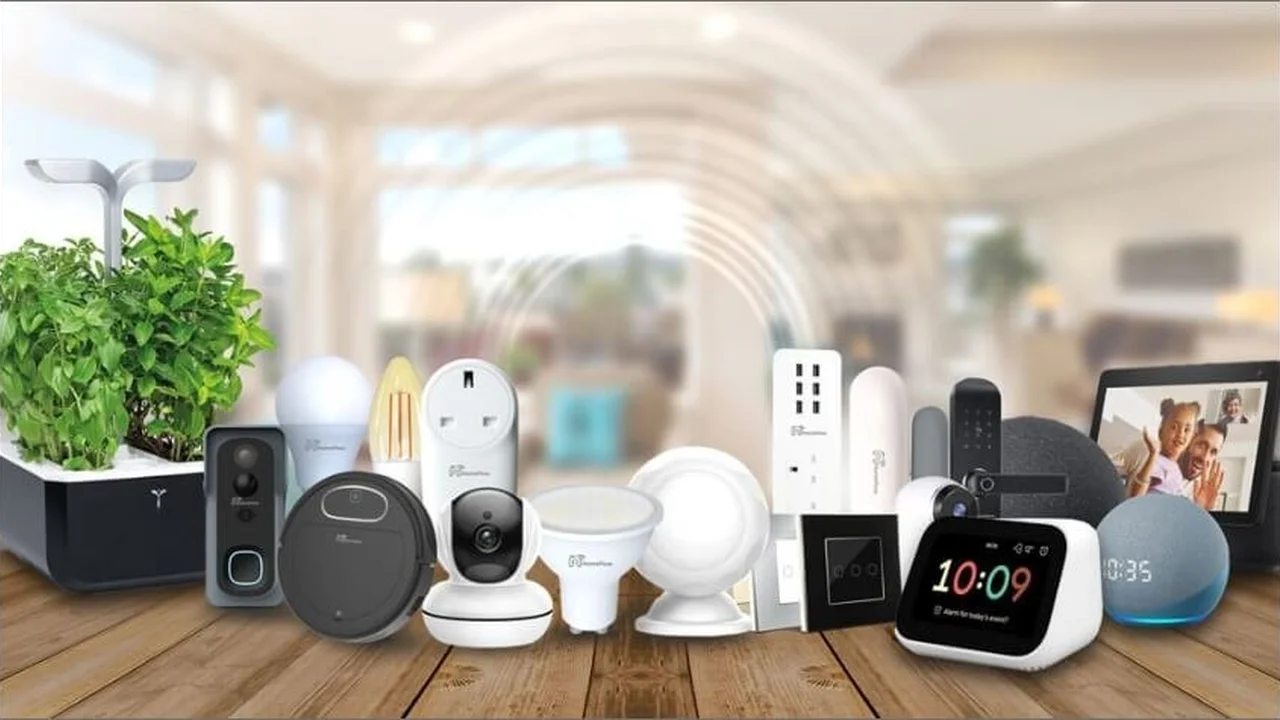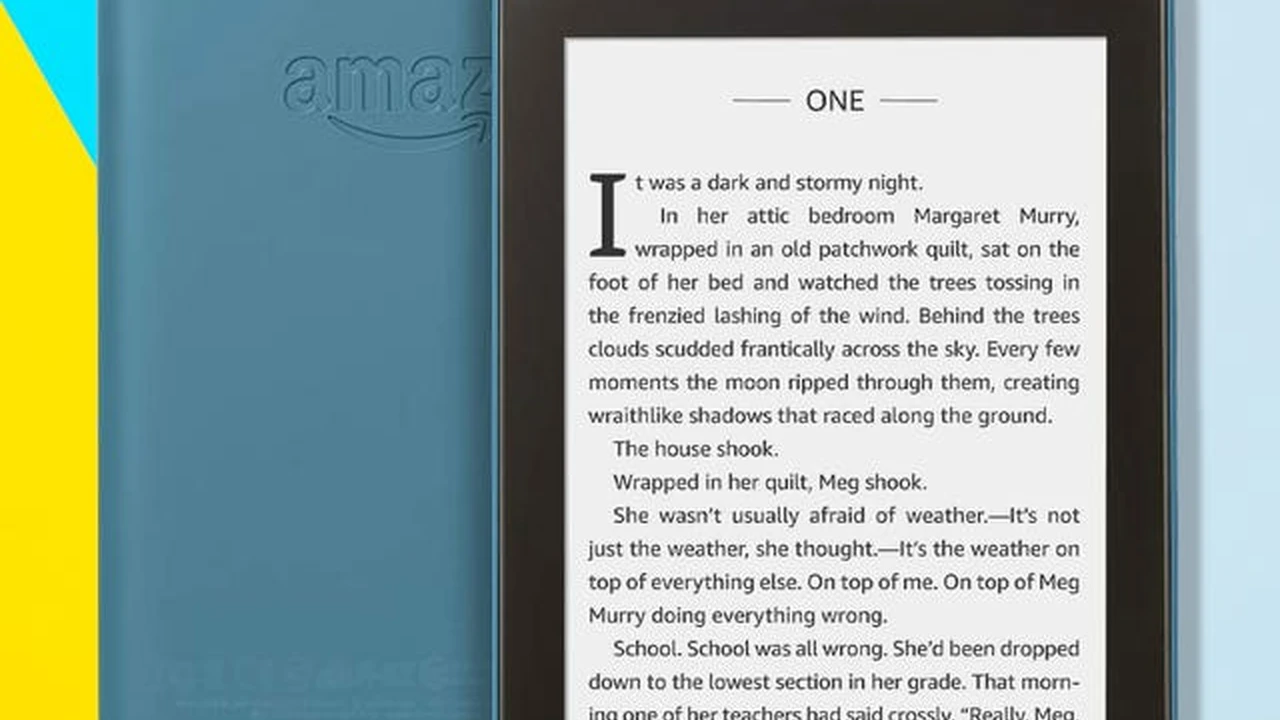
Best Smart Home Devices Made from Recycled Materials
Why Choose Smart Home Devices Made from Recycled Materials?
Hey there, eco-conscious tech enthusiast! Ever thought about how your smart home gadgets impact our planet? It's a big deal, right? We're talking about everything from the energy they consume to the materials they're made from. And let's be real, the tech industry isn't exactly known for being super green. But guess what? Things are changing, and that's awesome! More and more brands are stepping up, focusing on sustainability, and that includes using recycled materials in their smart home devices. This isn't just some trendy buzzword; it's about making a real difference. When you opt for a smart device made from recycled plastics, metals, or other reclaimed materials, you're directly contributing to reducing waste, conserving natural resources, and lowering the carbon footprint associated with manufacturing new products from scratch. It's a win-win: you get cool tech, and Mother Earth gets a break. Plus, it often means these companies are thinking about the entire lifecycle of their products, from how they're sourced to how they can be recycled again. Pretty neat, huh? So, if you're looking to make your smart home even smarter by being more environmentally friendly, sticking around because we're diving deep into some fantastic options that are doing their part for the planet.
Top Smart Speakers and Displays with Recycled Content
Alright, let's kick things off with something almost everyone has or wants in their smart home: smart speakers and displays. These little hubs of information and entertainment are getting a green makeover. It's not just about great sound or a crisp display anymore; it's about what's inside and how it's made. Companies are increasingly incorporating post-consumer recycled (PCR) plastics and even recycled aluminum into the casings and internal components of these devices. This significantly reduces the demand for virgin plastics and metals, which are resource-intensive to produce. Think about it: every time you ask Alexa or Google Assistant a question, you could be doing it through a device that's literally giving old materials a new life. It's a small step for you, but a giant leap for sustainability. Plus, many of these brands are also focusing on energy efficiency, making sure their devices sip power rather than guzzle it. So, you're not just saving the planet with recycled materials, but also potentially saving a few bucks on your electricity bill. Pretty cool, right? Let's check out some of the leading contenders in this space.
Google Nest Audio and Nest Hub Max Recycled Plastics
When it comes to smart speakers and displays, Google has been a frontrunner in incorporating recycled materials. Their Google Nest Audio, for instance, is a fantastic example. This sleek speaker, known for its rich, full sound, boasts an enclosure made from 70% recycled plastic. That's a significant chunk of reclaimed material! It means less new plastic being produced and less waste ending up in landfills. The fabric covering also adds a nice touch, making it blend seamlessly into any home decor. Setting it up is a breeze, and its integration with the Google Assistant ecosystem is, as you'd expect, top-notch. You can stream music, control other smart home devices, get news updates, and so much more, all while knowing you've made a more sustainable choice. The sound quality is surprisingly good for its size, offering clear vocals and decent bass, making it perfect for casual listening or even as a primary speaker in a smaller room. It's available in several colors, usually retailing for around $99.99, though prices can vary depending on sales and retailers. You can often find it at major electronics stores like Best Buy, Target, or directly from the Google Store.
Then there's the Google Nest Hub Max. This smart display takes things up a notch with a screen, camera, and even more robust speakers. The enclosure of the Nest Hub Max is also made with 50% recycled plastic. This device is a true command center for your smart home. You can watch YouTube videos, make video calls with Google Duo, view your Nest security camera feeds, and control all your compatible smart devices with a tap or a voice command. The camera also features Face Match and Voice Match technology, personalizing your experience. The sound quality is impressive for a smart display, making it great for background music or even watching movies. It's a bit pricier, typically around $229.00, but its versatility and sustainable design make it a worthwhile investment for many. You can find it at similar retailers as the Nest Audio.
Amazon Echo Dot and Echo Show Sustainable Fabrics
Not to be outdone, Amazon has also made strides in incorporating sustainable materials into their popular Echo line. While they might not always specify a high percentage of recycled plastic in the main enclosure, they often highlight the use of 100% post-consumer recycled fabric in their devices. For example, the latest generations of the Amazon Echo Dot (like the 5th Gen) and the Amazon Echo Show 5 (3rd Gen) feature these recycled fabrics. The Echo Dot is Amazon's most popular smart speaker, known for its compact size and affordability. It's perfect for adding Alexa to any room without taking up much space. You can ask it questions, play music, set alarms, and control smart home devices. The sound quality has improved with each generation, offering surprisingly good audio for such a small device. It usually retails for around $49.99, making it a very accessible entry point into the smart home world. Its small footprint and low power consumption also contribute to its eco-friendliness.
The Amazon Echo Show 5 is a compact smart display that brings visual elements to your Alexa experience. With its 5.5-inch screen, you can see song lyrics, weather forecasts, video calls, and even security camera feeds. The use of recycled fabric in its design is a nice touch, showing Amazon's commitment to reducing its environmental impact. It's a great bedside companion for alarms, news briefings, and quick video calls. The Echo Show 5 typically costs around $89.99. Both the Echo Dot and Echo Show devices are widely available at Amazon.com, Best Buy, and other major electronics retailers. While the percentage of recycled plastic in the core components might not be as high as some Google devices, the focus on recycled fabrics is a positive step, and Amazon also emphasizes their commitment to reducing packaging waste and increasing device longevity through software updates.
Eco-Friendly Smart Lighting Solutions
Moving on from speakers, let's shed some light on sustainable smart lighting. This is an area where you can make a huge impact, not just by choosing products made from recycled materials, but also by significantly reducing your energy consumption. Smart LED bulbs are inherently more energy-efficient than traditional incandescent or even CFL bulbs, but some brands are going the extra mile by using recycled plastics in the bulb housings or even in the packaging. It's about making the entire lighting ecosystem greener, from manufacturing to daily use. Plus, smart lighting offers incredible convenience and customization, allowing you to set schedules, change colors, and dim lights from your phone or voice assistant. This can further optimize energy use by ensuring lights are only on when and where they're needed. So, let's illuminate some of the best options out there that are lighting up the path to a more sustainable future.
Philips Hue White and Color Ambiance Recycled Packaging
While Philips Hue bulbs themselves aren't typically made from recycled materials (due to the complex nature of LED components and heat dissipation requirements), Philips, as a brand, has made significant commitments to sustainability, particularly in their packaging. Many of their Philips Hue White and Color Ambiance starter kits and individual bulbs now come in packaging made from recycled paper and cardboard, often with reduced plastic inserts. This might seem like a small detail, but packaging waste is a massive problem in the electronics industry, so every bit helps. The Hue system is arguably the most comprehensive and popular smart lighting system out there, offering an incredible range of colors, brightness, and smart features. You can create custom scenes, sync lights with music or movies, and control them from anywhere. A starter kit with a Hue Bridge and a few White and Color Ambiance bulbs can range from $150 to $200, while individual bulbs are around $40-$50. They are widely available at electronics stores, home improvement stores, and online retailers like Amazon. By choosing Hue, you're investing in a robust, energy-efficient system, and supporting a company that's actively working on reducing its environmental footprint through responsible packaging and manufacturing processes.
Nanoleaf Smart Lighting Panels Sustainable Design
Nanoleaf is another brand that's pushing the boundaries of sustainable design in smart lighting, particularly with their unique modular light panels. While specific percentages of recycled materials in their panels might not always be explicitly stated for every component, Nanoleaf emphasizes a commitment to sustainability through their product design, energy efficiency, and responsible manufacturing practices. Their Nanoleaf Shapes and Nanoleaf Lines panels are known for their incredible energy efficiency, using very little power to create stunning light displays. They are also designed to be modular and long-lasting, reducing the need for frequent replacements. The company often highlights its efforts to minimize waste in production and use recyclable packaging. These panels are more than just lights; they're interactive art pieces that can transform any room. You can customize patterns, colors, and even sync them with music. A starter kit for Nanoleaf Shapes (like the Hexagons or Triangles) typically costs around $199.99 for a pack of 9 panels, while Nanoleaf Lines starter kits are similar. They are available at major electronics retailers like Best Buy, Apple Stores, and directly from Nanoleaf's website. Choosing Nanoleaf means investing in a unique, energy-efficient lighting solution from a company with a strong sustainability ethos.
Smart Home Security Devices with Recycled Components
When it comes to keeping your home safe and sound, smart security devices are absolute game-changers. But did you know that some of these vigilant guardians are also being built with the planet in mind? We're talking about security cameras, video doorbells, and alarm systems that incorporate recycled plastics and other sustainable materials. This is a big deal because security tech often involves a lot of plastic casings and electronic components. By using recycled content, manufacturers are helping to divert waste from landfills and reduce the environmental impact of producing new materials. It's about having peace of mind for your home and for the environment. Plus, many of these devices are designed to be energy-efficient, running on low power or even solar power, further reducing their footprint. So, let's take a look at some of the top picks that are protecting your home and the planet simultaneously.
Arlo Essential Spotlight Camera Recycled Plastics
Arlo is a well-known name in home security, and they've been making strides in sustainability with products like the Arlo Essential Spotlight Camera. This popular outdoor security camera is designed with sustainability in mind, featuring an enclosure made from 40% recycled plastic. That's a solid commitment to using reclaimed materials! The Essential Spotlight Camera offers 1080p HD video, integrated spotlight, color night vision, and two-way audio, making it a comprehensive solution for monitoring your property. It's wire-free, making installation super easy, and connects directly to Wi-Fi, so you don't need a separate hub. The battery life is excellent, and it's weather-resistant, perfect for outdoor use. You can get real-time alerts on your phone and view live footage whenever you want. The Arlo Essential Spotlight Camera typically retails for around $129.99 to $149.99, depending on the retailer and any ongoing sales. You can find it at Best Buy, Amazon, and other major electronics stores. It's a great choice if you're looking for reliable outdoor security with a greener footprint.
Ring Video Doorbell Wired Recycled Materials in Packaging
Ring, a subsidiary of Amazon, is a dominant player in the video doorbell market. While specific percentages of recycled materials in the device itself might not always be highlighted, Ring, like Amazon's other devices, has made significant efforts in sustainable packaging. Many of their products, including the popular Ring Video Doorbell Wired, come in packaging made from 100% recycled materials, often with reduced plastic. This focus on packaging sustainability is crucial for reducing overall waste in the supply chain. The Ring Video Doorbell Wired is an affordable and effective way to monitor your front door. It offers 1080p HD video, two-way talk, and real-time notifications when someone presses the doorbell or triggers the motion sensors. It requires existing doorbell wiring for power, ensuring continuous operation without needing to recharge batteries. It's a straightforward and reliable option for basic doorbell security. The Ring Video Doorbell Wired is usually priced around $64.99, making it one of the most budget-friendly smart doorbells on the market. You can purchase it from Amazon.com, Best Buy, and other electronics retailers. While the device itself might not boast high recycled content, the brand's commitment to sustainable packaging and energy-efficient operation contributes to a more eco-friendly smart home.
Sustainable Smart Home Thermostats and Energy Monitors
Now, let's talk about smart home devices that directly help you save energy and, by extension, reduce your carbon footprint: smart thermostats and energy monitors. These gadgets are inherently eco-friendly because their primary function is to optimize energy consumption. But some brands are taking it a step further by incorporating recycled materials into their design. It's like a double whammy of sustainability! Not only are you getting a device that helps you use less energy for heating and cooling, but the device itself is also made with a reduced environmental impact. This is where smart tech truly shines in its ability to contribute to a greener lifestyle. By intelligently managing your home's climate and giving you insights into your energy usage, these devices empower you to make more informed and sustainable choices. Let's dive into some of the best options that are keeping your home comfortable and your conscience clear.
Google Nest Thermostat Recycled Plastics and Glass
Google's commitment to sustainability extends to its popular smart thermostats. The latest Google Nest Thermostat is a prime example, with its enclosure made from 49% recycled plastic. That's nearly half of the plastic coming from reclaimed sources! It also features recycled glass in its construction, adding to its eco-friendly credentials. This thermostat is designed to be user-friendly and energy-efficient. It learns your habits and preferences over time, automatically adjusting the temperature to save energy when you're away or asleep. You can control it from anywhere using the Google Home app, and it integrates seamlessly with Google Assistant. It also offers features like Savings Finder, which suggests ways to save even more energy. The Nest Thermostat is a sleek and modern addition to any home, typically retailing for around $129.99. It's available at major electronics stores, home improvement stores like Home Depot and Lowe's, and the Google Store. Choosing the Nest Thermostat means you're getting a smart device that's both smart for your wallet and smart for the planet.
Sense Energy Monitor Sustainable Design Focus
While the Sense Energy Monitor itself isn't primarily made from recycled materials (given its internal electronic components), Sense as a company is entirely focused on sustainability through energy efficiency. Their product's core purpose is to help you understand and reduce your home's energy consumption, which is a massive win for the environment. The Sense monitor installs in your electrical panel and provides real-time insights into your home's energy usage, even identifying individual appliances. This empowers you to make informed decisions about when and how you use energy, leading to significant savings and a reduced carbon footprint. The device is designed for longevity and reliability, minimizing the need for replacements. It typically costs around $299.00, which is an investment, but the potential long-term energy savings can make it pay for itself. You can purchase it directly from the Sense website or through Amazon. While not made from recycled materials, its function directly contributes to a more sustainable home, making it an excellent choice for the eco-conscious homeowner.
Smart Home Appliances and Accessories with Recycled Content
Beyond the usual suspects, the world of smart home devices is vast, encompassing everything from robotic vacuums to smart plugs and even kitchen gadgets. And guess what? Even in these diverse categories, you can find products that are incorporating recycled materials. It's a testament to how sustainability is becoming a more widespread consideration across the entire tech landscape. These devices not only bring convenience and efficiency to your daily life but also do so with a reduced environmental impact. It's about making every corner of your home a little bit greener, one smart gadget at a time. From cleaning your floors to managing your power outlets, there are eco-friendly options emerging. Let's explore some of these innovative products that are making a difference.
iRobot Roomba j7+ Recycled Plastic Components
Even robotic vacuums are getting in on the eco-friendly action! iRobot, a leader in the robotic vacuum market, has been increasing its use of recycled materials in its products. The iRobot Roomba j7+, for example, incorporates a significant amount of recycled plastic in its components. While the exact percentage can vary by model and production batch, iRobot has publicly committed to increasing the use of recycled content across its product lines. The Roomba j7+ is a premium robot vacuum that intelligently navigates your home, avoiding obstacles like pet waste and charging cords. It features a self-emptying base, so you don't have to think about vacuuming for weeks. It's a fantastic convenience device that also helps keep your home clean. The j7+ is known for its powerful suction and smart mapping capabilities. It typically retails for around $799.99 to $849.99, placing it in the higher end of the robot vacuum market. You can find it at major electronics retailers like Best Buy, Amazon, and directly from iRobot's website. Choosing a Roomba with recycled components means you're getting cutting-edge cleaning technology with a nod to environmental responsibility.
TP-Link Kasa Smart Plugs Recycled Packaging
Smart plugs are simple yet incredibly useful devices for turning any ordinary appliance into a smart one. While the plugs themselves are small and often made of durable plastics, brands like TP-Link, with their popular Kasa Smart line, are focusing on sustainable packaging. Many TP-Link Kasa Smart Plugs now come in packaging made from recycled and recyclable materials, with minimal plastic. This reduces the waste generated from the product's initial purchase. Kasa Smart Plugs are super easy to set up and use. You can control connected devices from your smartphone, set schedules, and even monitor energy usage on some models. They are compatible with Amazon Alexa and Google Assistant, allowing for voice control. They are also very affordable, typically ranging from $15 to $25 for a single plug, or less per unit in multi-packs. You can find them almost anywhere electronics are sold, including Amazon, Best Buy, and Walmart. While the product itself might not be made from recycled materials, supporting brands that prioritize sustainable packaging is an important step towards a greener tech industry.
The Future of Sustainable Smart Home Tech
So, what's next for sustainable smart home tech? It's an exciting time, that's for sure! We're seeing a clear trend towards more brands embracing circular economy principles. This means not just using recycled materials, but also designing products that are easier to repair, upgrade, and ultimately recycle at the end of their life. Imagine a future where your smart thermostat or speaker can be easily disassembled, and its components reused for a new device. That's the dream, and we're slowly but surely moving towards it. We're also likely to see more innovation in bio-based plastics and other novel sustainable materials. Plus, the focus on energy efficiency will only intensify, with devices becoming even smarter about how they consume power. The integration of AI will play a huge role here, optimizing energy use in ways we can barely imagine today. It's not just about individual products; it's about building an entire smart home ecosystem that is inherently sustainable. As consumers, our choices matter more than ever. By supporting brands that prioritize recycled materials, energy efficiency, and responsible manufacturing, we're sending a clear message to the industry: we want tech that's good for us and good for the planet. So, keep an eye out for these innovations, and let's build a smarter, greener future together!
:max_bytes(150000):strip_icc()/277019-baked-pork-chops-with-cream-of-mushroom-soup-DDMFS-beauty-4x3-BG-7505-5762b731cf30447d9cbbbbbf387beafa.jpg)






